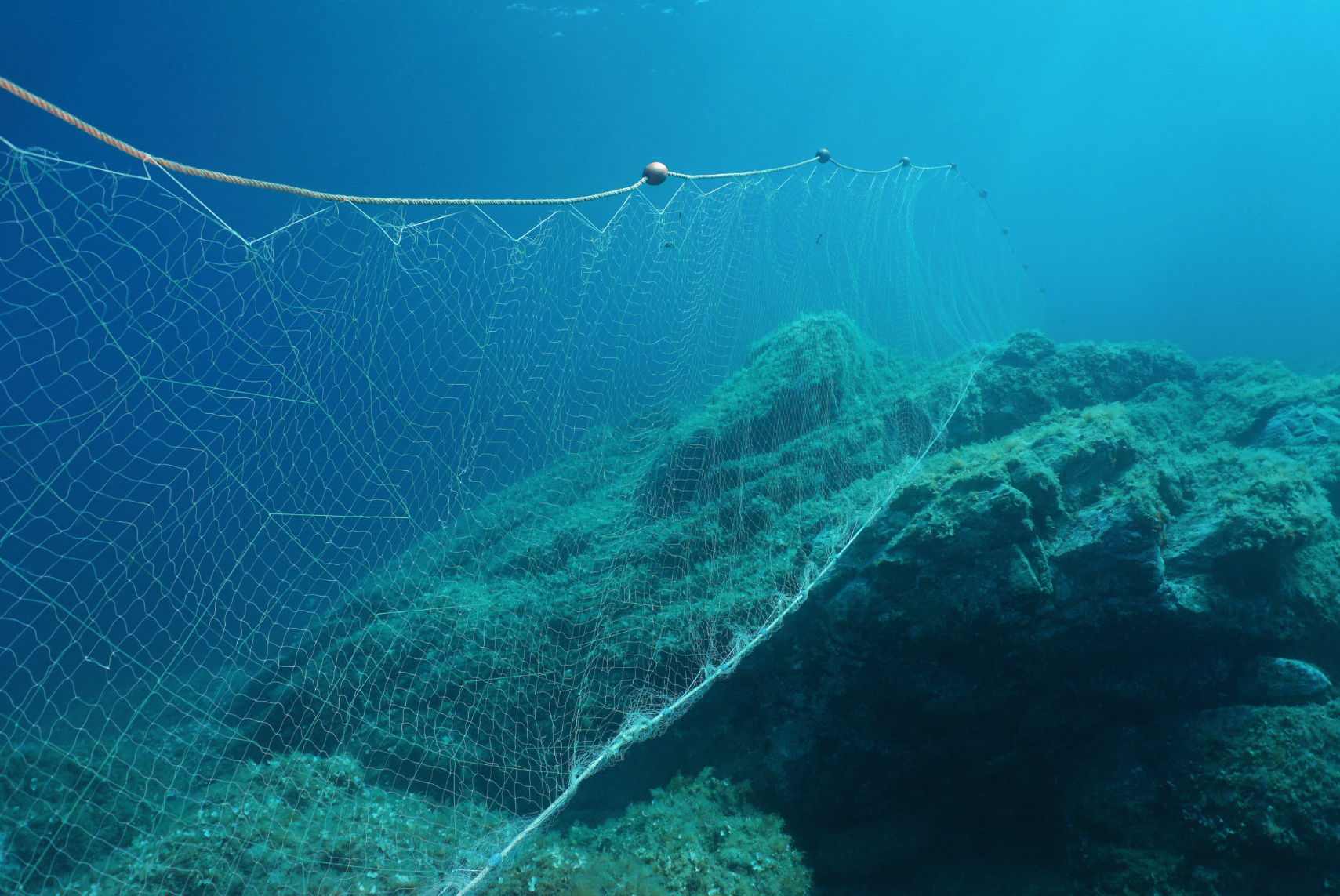Does Your Halibut Come With a Side of Bycatch?
Imagine a nearly invisible underwater fence made of mesh nets weighted to the seafloor. It can be up to 13 feet tall and extend as long as the Golden Gate Bridge, spanning across delicate ecosystems and habitats. These are set gillnets, and they’re used to catch California halibut and white seabass.
Unfortunately, set gillnets don’t just catch the targeted fish. They entangle anything in their path, indiscriminately catching more than 125 different species of ocean animals, including sea lions, sea turtles, whales, seabirds, and sharks.
Impacts on Sharks, Skates, and Rays
Set gillnets are notorious for their high bycatch rates, throwing overboard 64% of all animals caught as waste. More than half of those are already dead, and those that are still alive can succumb to their injuries or the stress. This is among the highest discard rates, by number of animals, of any fishery in the country.
The majority of species caught as bycatch are elasmobranchs (sharks, skates, and rays). At these numbers, we estimate that the fishery has thrown back a minimum of 62,000 California sharks over the last 15 years. The slow reproductive characteristics of sharks and rays make them particularly vulnerable to overfishing, and this, combined with declining populations globally, raises significant concern for the health of our blue waters.
The Southern California Bight is a critical nursery area for various shark species, including white sharks. However, there are a lot of unknowns about the health and abundance of these local shark populations. Of the 27 elasmobranch species caught, 22 have no stock assessment. Continuing to catch and throw overboard sharks, without understanding how it’s impacting the ecosystem, is a risky endeavor.
Protecting Southern California’s Ocean
The waters of Southern California are some of the most productive and diverse in the world. This ocean ecosystem is teeming with life, from giant kelp forests to migrating humpback whales, white shark nurseries to deep sea corals. Unfortunately, the marine life in this region all share the common threat of becoming entangled in set gillnet fishing gear.
California tends to be a global leader when it comes to ocean conservation, and the state passed Proposition 132 in 1990, prohibiting the use of set gillnets within state waters (0-3 nautical miles) off Southern California. However, that doesn’t apply to offshore waters and around the Channel Islands, an incredibly biodiverse area often referred to as the “Galapagos of North America.”
California’s waters deserve to be protected, and California’s residents should have the option to enjoy sustainably-sourced seafood from local anglers – without wondering how many sharks died for their halibut filet. It’s up to fishery managers and policymakers to ensure this seafood is responsibly harvested in a way that supports recreation, other fisheries, and the unique marine biodiversity along California’s coastline.
Shark Allies is supporting a campaign, led by Oceana and the Turtle Island Restoration Network, to change gear limitations in the CA Set Gillnet and Halibut Bottom Trawl fishery. Potential management solutions include:
Time and area closures, such as prohibiting set gillnets in certain areas and/or seasons
Hard caps on bycatch, limiting the number of a certain species that can be caught as bycatch
Decreased soak times, limiting the duration of time that set gillnets can be in the water
Fishing gear transition program, offering financial compensation to fisherman to switch to cleaner gear
Bycatch monitoring and gear marking, to accurately detect the entanglement of rare or endangered species
TAKE ACTION: Help Protect California’s Sharks!
INDIVIDUALS:
SURFERS & SURF INDUSTRY:
Add your name to Oceana’s letter.
BUSINESSES:



